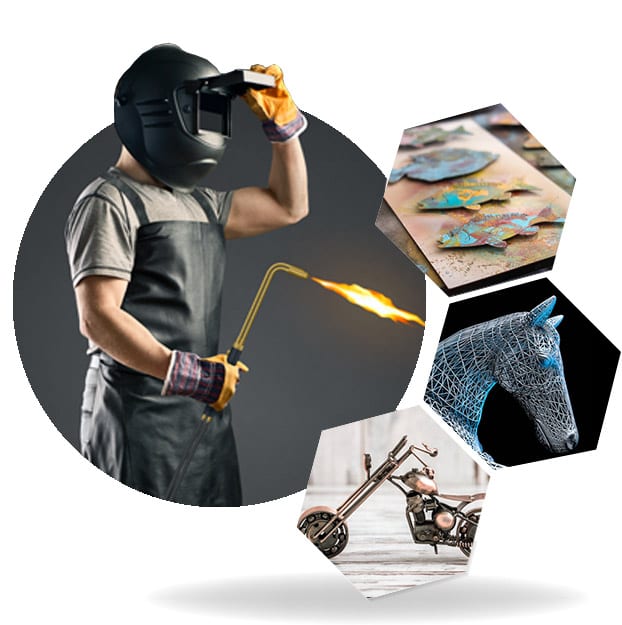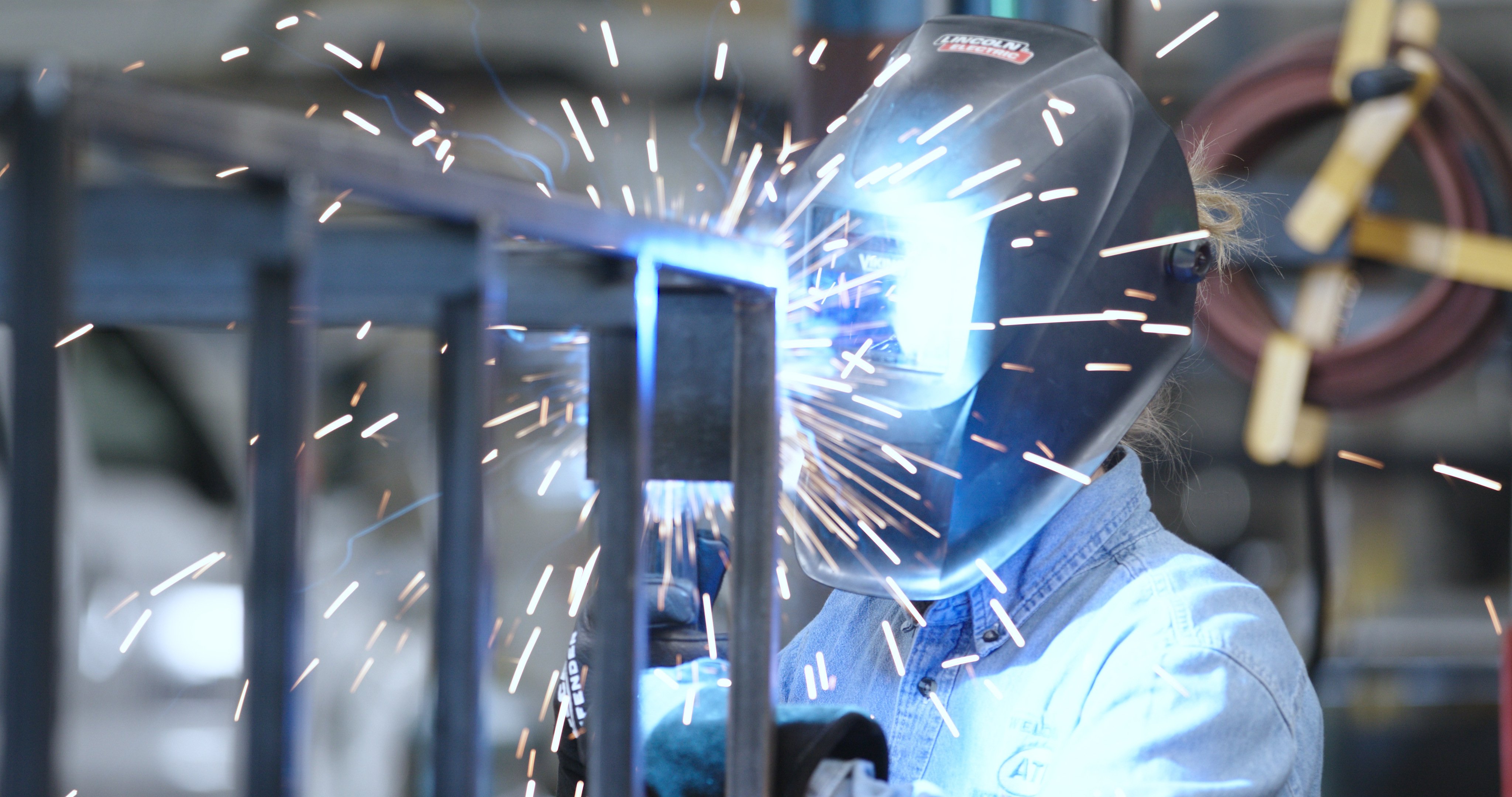Most frequent weld defects solved by Belgrade Welding experts
Usual Welding Repair Service Issues and Just How to Address Them Effectively
Welding repairs typically come across a variety of problems that can jeopardize the honesty of the final item. Common issues include insufficient penetration, porosity, and imbalance, to name a few. Each issue presents one-of-a-kind difficulties that need details techniques for resolution. Comprehending these issues is important for welders aiming to improve their skills and results. This conversation will certainly explore these typical welding repair work issues and reliable methods to address them.
Insufficient Infiltration
Poor infiltration takes place when the weld steel stops working to totally fuse with the base product, leading to weak joints and potential structural failures. This concern often comes from insufficient warmth input, wrong electrode angle, or inappropriate welding rate. Welders might come across poor penetration as a result of a mistake of the necessary criteria for a specific material density or type. Furthermore, contamination on the base product's surface area can impede effective bonding, worsening the trouble. To address inadequate penetration, welders should assure suitable settings on their devices and maintain a clean work surface area. Normal assessment of welds is advised to identify any shortages early, enabling for timely improvements and the prevention of compromised structural honesty in welded assemblies.
Porosity
Porosity is an usual issue in bonded joints that manifests as little gas bubbles trapped within the weld metal. This defect can endanger the integrity of the weld, causing lowered stamina and potential failing under anxiety. Montana Mobile Welding and Repair. Porosity generally emerges from contamination, wetness, or incorrect welding methods, which permit gases to escape into the liquified weld pool. To deal with porosity, welders should assure proper surface prep work, maintain a clean working atmosphere, and make use of suitable welding parameters. In addition, selecting the appropriate filler product and protecting gas can mitigate gas entrapment. Routine evaluation and testing of welds can aid identify porosity early, ensuring timely rehabilitative activities are taken, consequently protecting the high quality and integrity of the bonded framework
Misalignment
Imbalance in welding can arise from numerous factors, including inappropriate configuration and thermal development. Recognizing the origin is crucial for effective resolution. Numerous adjustment techniques are available to straighten parts and ensure structural integrity.
Reasons for Imbalance
Welding imbalance usually stems from a selection of underlying issues that can jeopardize structural honesty. One key cause is improper fit-up of components before welding, which can cause voids and irregular surfaces. Variations in thermal growth during the welding process can likewise result in distortion, particularly if the materials being joined have various coefficients of growth. In addition, inadequate securing and fixturing might fall short to hold elements securely in location, resulting in motion during welding. Badly maintained devices, consisting of welding makers and tools, may present inconsistencies in the weld grain, further adding to imbalance. Lastly, operator mistake, stemming from inadequate training or experience, can additionally play a significant function in producing misaligned welds.
Correction Methods Offered
Resolving misalignment properly requires a mix of corrective techniques tailored to the certain problems available. One usual method is making use of jigs or components to hold elements in the proper placement throughout welding, ensuring regular alignment. Furthermore, pre-heating the products can help in reducing distortion and improve fit-up. For significant misalignment, mechanical adjustment strategies, such as making use of hydraulic jacks or clamps, can be used to correct the placement before welding. Post-weld warmth therapy might additionally be essential to ease stresses brought on by misalignment. Mindful examination and modification throughout the configuration stage can protect against misalignment problems from becoming considerable troubles, promoting a smoother welding process and enhancing general structural honesty.
Distortion
Distortion is an usual challenge in welding that can arise from numerous elements, consisting of irregular cooling and heating. Comprehending the root causes of distortion is crucial for carrying out reliable prevention techniques. Addressing this concern not just improves structural honesty however also boosts the total high quality of the weld.
Causes of Distortion
When based on the intense warmth of welding, materials frequently undergo adjustments that can lead to distortion. This sensation mostly emerges from thermal growth and contraction throughout the welding process. As the weld area warms up, the product broadens; upon cooling, it gets, which can develop internal anxieties. Additionally, irregular home heating throughout a workpiece can aggravate these anxieties, resulting in warping or bending. The sort of material likewise plays a significant function; steels with differing thermal conductivity and coefficients of expansion may react in different ways, leading to uncertain distortions. In addition, inadequate joint layout and inadequate fixturing can add to misalignment during welding, increasing the possibility of distortion. Recognizing these reasons is necessary for efficient welding repair work and prevention strategies.
Prevention Techniques
Reliable prevention methods for distortion during welding focus on regulating warm input and making certain correct joint design. Keeping a constant warmth input helps to reduce thermal expansion and tightening, which can result in distortion. Using methods such as pre-heating the work surface can also reduce the temperature level slope, promoting uniform heating. In addition, selecting appropriate joint styles, such as T-joints or lap joints, can improve security and minimize stress concentrations. Applying appropriate fixturing to safeguard the work surfaces in area better help in preserving positioning throughout the welding process. Staggered welding series can disperse warmth extra uniformly, preventing local distortion. By using these approaches, welders can greatly reduce the probability of distortion and enhance the overall quality of their welds.
Fracturing
Fracturing is an usual problem come across in welding repair services, often arising from numerous aspects such as incorrect air conditioning prices, product selection, or insufficient joint preparation. The occurrence of fractures can considerably jeopardize the integrity of the weld, resulting in prospective failings throughout operation. To address this problem, welders should first assess the source, making certain that products work and suitably selected for the particular application. In addition, regulating the cooling rate throughout the welding procedure is necessary; quick cooling can induce stress and anxiety and lead to splitting. Correct joint design and prep work also add to decreasing the risk. Carrying out these aws d1 5 strategies can improve weld top quality and resilience, eventually decreasing the likelihood of cracking in completed weldments.

Incomplete Blend
A significant problem in welding fixings is insufficient fusion, which happens when the weld metal does not adequately bond with the base material or previous weld passes - Montana Mobile Welding and Repair Belgrade Welding. This issue can cause weak points in the joint, potentially compromising the integrity of the welded framework. Factors adding to incomplete combination consist of insufficient warmth input, incorrect welding strategy, and contamination of the surface areas being signed up with. To resolve this problem effectively, welders must guarantee proper pre-weld cleansing and surface area preparation, as well as change their welding specifications to accomplish ample penetration and blend. Normal inspection during the welding process can additionally aid determine insufficient combination early, allowing for timely corrective procedures to enhance the overall top quality of the weld
Overheating
While welding fixings can improve architectural integrity, overheating provides a considerable challenge that can cause product destruction. Excessive warmth during welding can alter the mechanical properties of steels, leading to decreased stamina, raised brittleness, and bending. This sensation is particularly critical in high-stress applications where structural dependability is paramount. Identifying overheating can involve aesthetic evaluations for staining or distortion, as well as keeping track of temperature level during the welding procedure. To alleviate the threats associated with getting too hot, welders should use appropriate methods, such as regulating warm input, changing travel rate, and making use of appropriate filler materials. In addition, implementing pre- and post-weld warm treatments can help recover material homes and enhance the overall quality of the fixing, making certain long-lasting performance and safety and security.
Frequently Asked Concerns
What Are the Usual Signs of a Welding Flaw?

How Can I Evaluate My Welds for Quality?
To test welds for quality, one can utilize visual inspections, ultrasonic testing, and radiographic methods. Each strategy assures architectural integrity, recognizes flaws, and verifies adherence to defined criteria, eventually improving the dependability of the bonded joints.
What Safety Precautions Should I Take While Welding?
When welding, one need to prioritize safety and security by wearing suitable individual protective equipment, ensuring proper ventilation, protecting combustible products away, maintaining a clean office, and universal welding wire recognizing surroundings to protect against accidents and injuries.
Can I Repair a Weld Without Redoing the Entire Joint?
Repairing a weld without remodeling the entire joint is possible, relying on the damage (Montana Mobile Welding and Repair Belgrade Welding). Strategies such as grinding, including filler product, or making use of a welding procedure can effectively deal with details problems while maintaining the bordering framework
What Tools Are Necessary for Efficient Welding Repair Works?
Important devices for efficient welding repair services include a welding machine, cord brush, mill, safety gear, clamps, and filler products. Each device plays an essential duty in ensuring quality and security during the fixing procedure. Porosity normally emerges from contamination, moisture, or inappropriate welding methods, which permit gases to get away into the liquified weld pool. Inadequately kept equipment, including welding machines and devices, may present inconsistencies in the weld bead, additional contributing to misalignment. When subjected to the extreme warm of welding, materials frequently go through modifications that can lead to distortion. Breaking is a typical issue run into in welding fixings, often resulting from different factors such as improper air conditioning rates, local welders material choice, or poor joint preparation. A substantial concern in welding fixings is incomplete fusion, which happens when the weld steel does not adequately bond with the base product or previous weld passes.